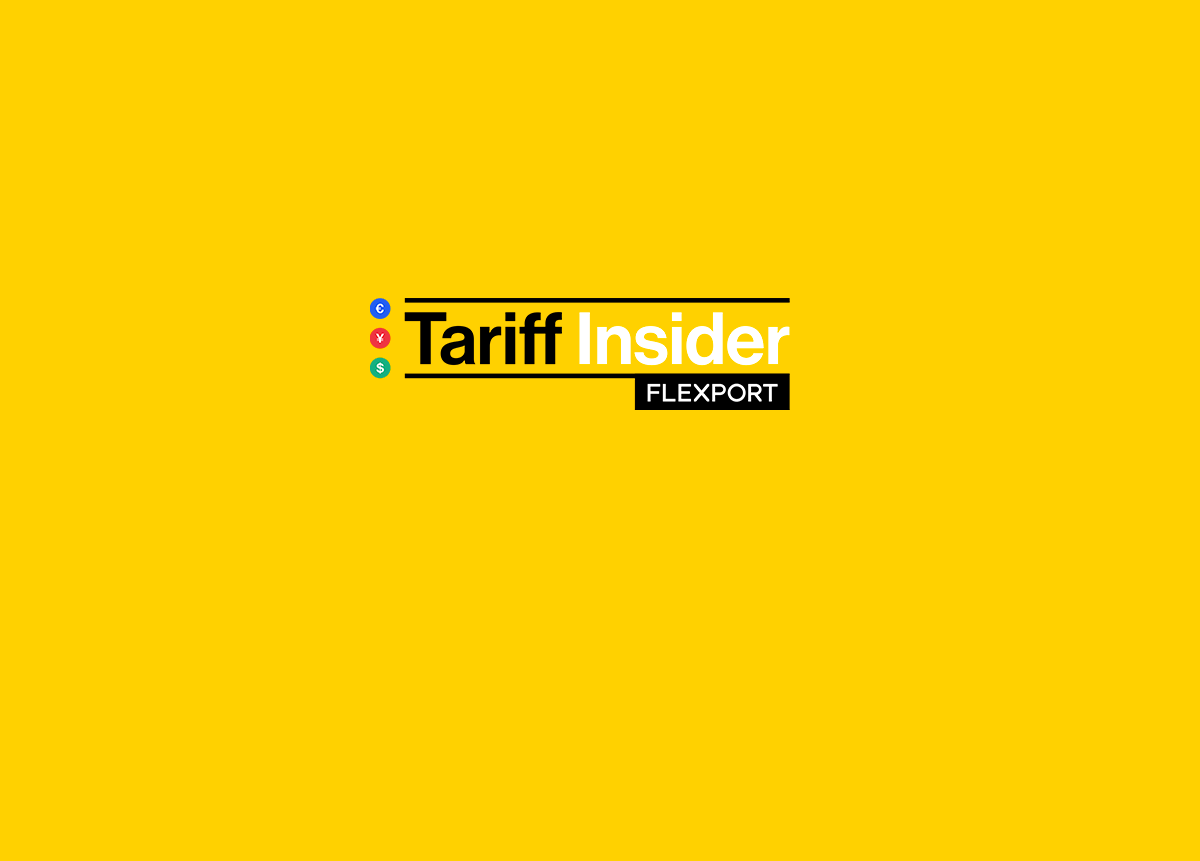
December 5, 2018
Tariff Insider: December 4, 2018
Tariff Insider: December 4, 2018
**The Big News: President Trump and President Xi find middle ground at post-G20 Summit meeting. **
In the first face-to-face meeting since the trade war began earlier this year, President Donald Trump and Chinese President Xi Jinping agreed to press pause on the ongoing trade war during a post-G20 Summit meeting in Buenos Aires. President Trump agreed that on January 1, 2019, he'll maintain the tariffs he's imposed on $200 billion worth of product at the current 10% rate, delaying an increase to 25% by 90 days. Shares of industrial and semiconductor stocks rose immediately after news broke of the three-month truce. Here are some additional highlights from the Summit, as communicated by the White House:
- China has agreed to purchase a "very substantial" amount of agricultural, energy, industrial and other product from the U.S.
- President Xi agreed to designate Fentanyl as a Controlled Substance. Because of this, Chinese shippers who sell Fentanyl to the U.S. will be subject to China's maximum penalty under the law.
- President Trump and President Xi will immediately begin negotiations on structural changes to forced technology transfer, intellectual property protection, non-tariff barriers, cyber intrusions and cyber theft, services and agriculture.
While President Trump has widely touted the success of the meeting, there remains some confusion over exactly what both countries agreed on. As of now, China has not publicly stated in detail what it will do in exchange for the "temporary truce." It also remains undefined what China would do in the next 90 days that it hasn't done over the last eight months of conflict.
With senior White House figures contradicting each other in the days following the meeting, it's now known that, in reality, there isn't a "specific agreement." The next crucial date for the trade war is December 18th, which marks the 40th anniversary of China's economic reforms, and it could prompt the country to emphasize its commitment to economic transformation, says Scott Kennedy, deputy director of the Freeman Chair in China Studies at the Center for Strategic and International Studies.Kennedy added that if a week goes by with no major announcements, then China won't likely change the direction of their economy and industrial policies, thereby re-escalating the trade war.
Flexport's VP and Global Head of Customs, Christian Vizcaino Jordan, mirrors the sentiment that there are still significant questions regarding the future of the trade war: "It's encouraging to see the U.S. and China may have reached a temporary agreement that helps our clients. That said, we expect uncertainty to continue heading into the new year. We'll be monitoring developments closely, hoping that both sides reach a clearly defined agreement that strengthens the long-term trading relationship between the world's two largest economies."
While this agreement between President Trump and President Xi represents a step toward potential resolution, the trade war is far from over. From the solar industry to the process of burying crops due to decreasing demand, it's clear that the impact from tariffs is still being widely felt – and will continue to have significant implications for shippers, industries and the global economy in the months ahead.
Impact: Shippers
Strong U.S. dollar may obscure some negative impact for shippers: Despite the effects of the U.S.-China trade war, U.S. shippers are still selling a large volume of Chinese goods. This is largely attributed to the strong U.S. economy. To keep up with demand, textile shippers are looking to manufacturers in Thailand and Vietnam, while the semiconductor sector is considering Mexico. As long as the U.S. dollar remains strong, consumers are expected to continue buying goods manufactured in China.
Impact: Industries
Retail industry cuts losses with varying approaches: Large American retailers, including Walmart and Home Depot, pulled planned purchases forward while the January 1 tariff increase still loomed. Amazon cut back on orders for some of its private-label products due to the lack of profitability caused by tariffs. Dollar Tree has been negotiating price concessions with vendors and even canceled some orders. Columbia Sportswear has engaged in "tariff engineering," where products are adjusted to lessen the impact of import taxes. Williams-Sonoma said that 15% of its total cost of goods sold is subject to the most recent round of tariffs, and it's working closely with manufacturers to mitigate the effects of the trade war.
Solar industry says it could be worse: According to Abigail Ross Hopper, president and CEO of the Solar Energy Industries Association, "Without tariffs, we would be growing." It has been almost a year since President Trump implemented a 30% tariff on solar cells and modules, but the move isn't harming the industry as much as originally anticipated. According to a report from the Solar Energy Industries Association, solar installations decreased by only 9% year-over-year.
Farming industry burying crops: With Chinese importers looking elsewhere for cheaper supply, many U.S. farmers have been burying their crops in their fields. With too little available storage space and demand continuing to fall, many farmers have had too few alternatives. According to Reuters, as much as 15% of soybean crops are too damaged to sell and/or have been buried.
Impact: Global Economy
U.S. GDP could be significantly reduced: A recent report published in ImpactECON found that if all trade war actions are implemented, U.S. gross domestic product (GDP) will be reduced by -1.78% in 2019. Total GDP losses would cumulate to a discounted value of $2.8 trillion between 2018 and 2019. An estimated 2.75 million workers are likely to be unemployed in 2019 as a result of the collective effects of the trade war, primarily targeting agricultural and low-skilled workers. Due to the combined effects of higher prices, lower wages and lower investment returns, losses would amount to an average of $17,300 per household by 2030.
Want to get more news and insights about the evolving shipping and logistics landscape? Sign up for Flexport's Weekly Market Update . And check back here next week for an updated round-up of recent tariff coverage.




